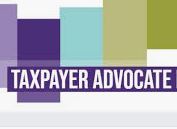
The National Taxpayer Advocate who works on behalf of U.S. taxpayers recently built a road map of the taxpayers journey. If you ever wondered what a tax professional does for their clients, you should take a close look at this extraordinary map. It is a stunning illustration every taxpayer and tax professional should see.
The map below illustrates, at a very high level, the stages of a taxpayer’s journey, from getting answers to tax law questions, all
the way through audits, appeals, collection, and litigation. It shows the complexity of tax administration, with its connections
and overlaps and repetitions between stages. As you can see from its numerous twists and turns, the road to compliance isn’t
always easy to navigate. But we hope this map helps taxpayers find their way. A project of the Taxpayer Advocate Service.




























Recent Comments